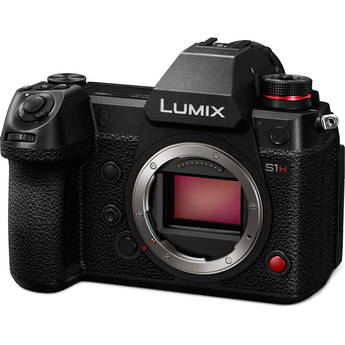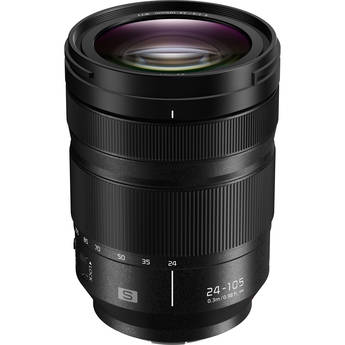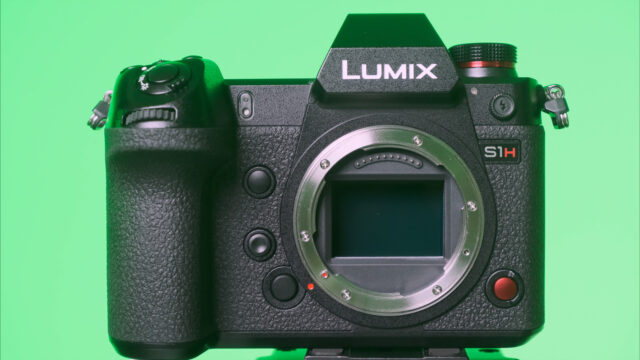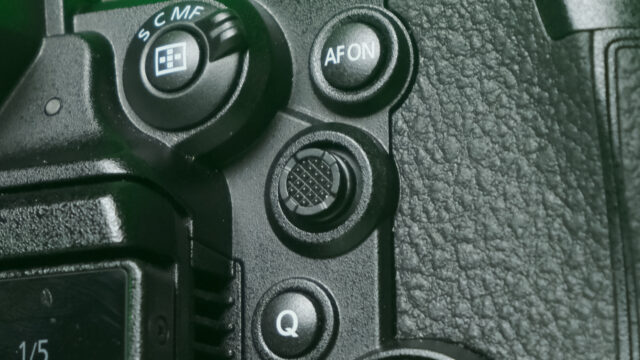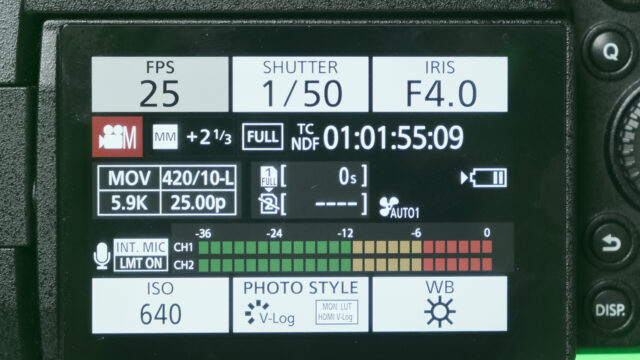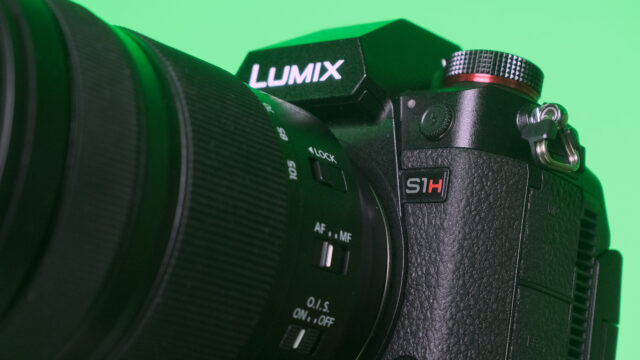Panasonic S1H Review – Is it the Best Full Frame Mirrorless Camera for Filmmakers yet?
Music Courtesy of MusicVine.com Get 25% off your next music license with code C5D25 (valid for one use per customer)
The Panasonic S1H is now finally available for purchasing and we took it for a spin in order to put it through its paces. If you are in a rush and have no time to continue reading, here is my conclusion first: Currently it is the best mirrorless camera that can shoot video in the market. Of course, no filming device is perfect, but any manufacturer who would like to produce something even better will have to work harder to achieve this. Ready to dive into details? Keep on reading.
EDIT: Our Panasonic S1H Lab test is now available online. You can access it by clicking here.
It was at the last day of May when the Panasonic S1H was first announced (looks like an eternity by now…) and since then we had several opportunities to play with the camera but now it was time to take a closer look into it and check how well Panasonic did with its flagship mirrorless full frame monster.
Panasonic S1H in a Nutshell
It is for some time now that Panasonic is moving in a parallel direction by bringing to the market a photo orientated camera first and a few months later, a video-oriented sibling (on the Micro Four Third front we could see this done with the Panasonic G9/GH5/GH5s). Now the same procedure is being repeated with the Panasonic S1 and S1H. This is why I was not surprised to see that some “filmmaking” key elements were missing from the S1 when it was intruded. It was just a question of time (and price) till a mirrorless “video orientated” camera, namely the S1H, would appear.
When I first had the chance to play with the S1H it was around the time when Blackmagic Design launched their BMPCC 6K so of course, my attention (and the attention of the audience too) went it to this direction. Then came the SIGMA fp. This camera is just about to be officially launched (see our full review by clicking here), but now it is time to put the Panasonic S1H into the spotlight and let me tell you, it deserves our full attention as the camera is so versatile and packed with features that one might be a bit confused when attempting to use it… So, here, in a nutshell, some of its highlights: a HUGE variety of resolutions, frame rates, and data rates to choose from (Up to 6K). 3:2 Full Frame sensor optimized for anamorphic work, dual SD cards recording, fabulous EVF, great 5 axis IBIS (In Body Stabilisation System), an internal fan to combat overheating issues, “unlimited” recording time, dual ISO and very capable lowlight recording and more. True, the camera is heavy to run with but extremely comfortable to hold – more on that later.
If you look carefully, you will notice that one feature is missing from my glorying list and this is ‘Auto Focus performance’. Like with other Panasonic mirrorless camera models, be it MFT or full frame sensor, Panasonic choose to implement Contrast detection AF and the results are very noticeable especially when trying to follow moving objects. This is very unfortunate as the camera could do probably better if it was equipped with Phase Detection Auto Focus system. Now, some will argue that a “proper” filming camera does not rely on AF so why to bother, but my opinion is extremely solid. The Auto Focus technology is progressing fast. Up to the point when accuracy and reliability can be trusted, so this feature is becoming extremely important for the independent One Man Band (documentary) operator who is working solo in the field.
Panasonic S1H – Usability
As I wrote earlier, the camera is heavy but comfortable to work with. But actually on second thought what really makes it heavy is Panasonic own L-Mount zoom lenses… I was using the 24-105mm f4 for filming the above story and I felt that the lens is a bit limiting me. I really felt restricted by doing camera movements, and on top, f/4 leaves a lot to be desired (even on such lowlight king camera). In favor of Panasonic, I must write that they probably noticed that too and created the 24-70mm f/2.8 lens which will of course help when filming in lowlight situations. Unfortunately during the time of conducting this review, this new lens was not optically ready so I could not test it together with the camera. I would like to spend an extra minute and talk about L-Mount lenses. It is a bit of a “chicken/egg” thing: more L-mount camera users, more incentives to develop new lenses; not enough attractive modestly priced lenses, many will consider if to buy L-mount cameras. And while on the subject of buying a camera, when you buy one, usually the tendency will be to buy a lens with the same mount to go with it. I do feel that the current offerings from members of the L-Mount alliance like Panasonic, SIGMA and Leica are either limited or expensive. What I would love to see are smaller and faster lenses that can accommodate both the Panasonic S1H/S1 and SIGMA fp cameras. For now, I’m hooked on trying to use some old Canon FD lenses together with the excellent KIPON L-Mount to FD adapter.
Other than that, you get a refined Panasonic camera menu (a la Varicam camera style) which for some might be simpler to navigate. Last but not least, the “joystick” at the back of the camera. Man, I tell you, this little knob and I are totally not good friends… Much to sensitive to my taste. The good thing is, I was told by Panasonic that its’ sensitivity can be adjusted. Now I should only find where is this option hiding in the menu…
Lab test summary
My colleague Gunther conducted our routine camera lab test and came up with some interesting findings. Here is a quick summary of his conclusion: “Spoiler alert. lab results are very impressive – the Panasonic S1H is the first camera in our tests, that shows nearly identical dynamic range results for the two ISO settings of the dual gain sensor!” The dynamic results are impressive (the Rolling Shutter less), so please stay tuned for the full comprehensive lab test results coming soon.
Panasonic S1H – Picture Quality
When testing the camera I was debating with myself which of the two new highlighted features I should check, the 6K resolution or its anamorphic capabilities. For now, I opted for the 6K resolution, but I’m eager to shoot a short documentary with it together with an anamorphic lens or at least a suitable anamorphic adapter. In this regard, it is worth mentioning that filming in 6K can leave a bit to be desired as ALL Intra, 400 Mbps and 4:2:2 color sampling are not supported in this filming mode. Those high specs goodies are reserved for filming in 4K DCI and downwards. (Please head to Panasonic’s official link to explore the mind-blowing diverse resolution/frame/data rates the S1H can offer).
Now, when reviewing the Panasonic S1, we were saying that the picture quality is very nice but somehow it lacks “Mojo” (not easy to explain. Maybe the best way to describe it is by using the words “identity/charm”). So how does the Panasonic S1H do in this regard? Well, in all honesty, the footage is clean, nice and have A LOT going for it, but to me personally, footage looks-wise, it is very similar to Panasonic S1. Call me crazy, but somehow it was not so easy to grade Panasonic’s S1H V-Log image. Just to be clear here, I’m NOT a colorist. I’m a cameraman who is painting his work and most of the time I find Panasonic’s skin tones tonality to be much too red (even after applying the official rec 709 LUT taken from here). And yes, Davinci Resolve can of course help in fixing the issue, but I really want to know and understand if it is my eyesight which sees enhanced red or, this is the reality…
Panasonic S1H vs the Panasonic S1
Well, here is the one million dollar question, which one to prefer, the Panasonic S1H or S1? (The two million dollar question is if to wait for the imaginary Sony a7S III). See my answer in the question… (Please head to my Panasonic S1 review by clicking here). The images coming from those 2 cameras are very similar. I don’t have a definite favorite here, as much is depending on your budget and style of shooting. The S1H is DEFINITELY a better video orientated camera but at a price. If you are not after anamorphic work and much of your creation will end on the web anyway, then the Panasonic S1 is a perfect camera to work with. The S1H is more capable, but the price difference might be steep for many and hard to justify. On the other hand, if filming is what feeds your family and you are after a very capable and flexible filming tool, the s1H is simply amazing! Actually, for what it is offering, the price is very fair.
Conclusion
Panasonic worked hard in order to create the best available full frame mirrorless camera that can shoot video. Sure it is not perfect (what is?), and sure we will continue to ask for better internal codec recording formats and variable ND filters, but all in all, this is a serious tool for the working professional who intended to create high-quality content at a relatively manageable price. Last but not least, Netflix just approved the camera for its productions. Full information can be found by clicking here and here.
Well done Panasonic!
The above video was shot in MOV 5.9K, 4:2:0, Long GOP, 25p. Picture Profile V-Log. Graded with FilmConvert. Lens: Panasonic 24-105mm f/4. Everything but the interview was shot handheld.
Music courtesy of MusicVine.com – Get 25% off any Pay-Per-Use license with code C5D25 (valid for one use per customer).
Many thanks for Brittany. Her courage and strength should be a torch for others!
What do you think about the Panasonic S1H? Are you considering purchasing it? Do you think it can be your main working tool? Please share with us your thoughts in the comment section below.
